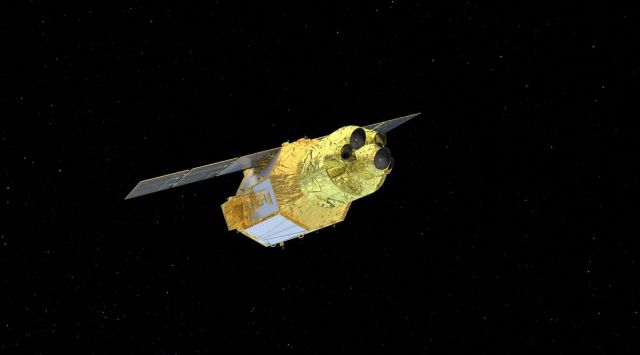An X-ray telescope piggybacked on Japan’s Moon mission launch
A powerful X-ray observatory launched along with Japan's SLIM mission that aims to land on the Moon.
 JAXA's XRISM spacecraft can be seen in this illustration. (NASA/JAXA)
JAXA's XRISM spacecraft can be seen in this illustration. (NASA/JAXA) Japan’s Moon lander mission called SLIM launched on Thursday morning after several weather-caused postponements. The H-IIA rocket that launched the mission also carried the XRISM (X-Ray Imaging and Spectroscopy Mission) that is a collaboration between NASA (National Aeronautics and Space Administration) and JAXA (Japan Aerospace Exploration Agency ). XRISM separated from the rocket about 14 minutes after launch.
The XRISM mission has two instruments—Resolve and Xtend developed in collaboration by both space agencies. Resolve is “microcalorimeter spectrometer.” When an X-ray hits the instrument’s 6×6 pixel detector, the energy causes a tiny increase in temperature. The instrument can measure each individual X-ray’s energy to provide information about the source including composition, motion and physical state.
XRISM’s second instrument, on the other hand, was wholly developed by JAXA. It gives XRISM the largest fields of view of any X-ray imaging satellite flown to date, according to NASA. It observes an area that corresponds to 60 per cent larger than the average apparent size of the full moon.
X-rays have wavelengths so short that they can pass in between the atoms of the dish-shaped mirrors that are used to capture visible, infrared and ultraviolet light. Instead of those mirrors, astronomers use curved nested mirrors that are turned on their sides. X-rays skip off these surfaces like stones on a water body, until they hit the detectors.







